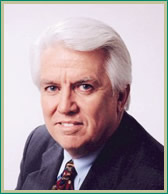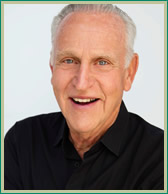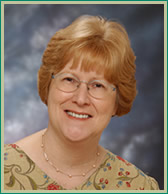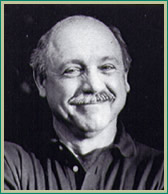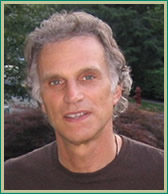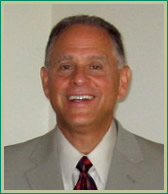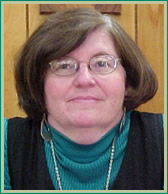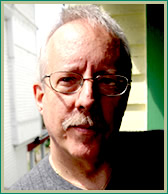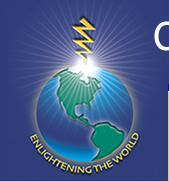

The Peskiest Creature The Secret Harvard Undergrads Can’t Be Wrong What’s the Big Idea? Being Aware of Blind Spots From a Babel of Voices to a Harmonious Chorus A Disempowering Aspect of NCLB The Empowerment of a First-Year Teacher Remember, Dear, Walk Gracefully The Power of Lenses
The Peskiest Creature
It has always interested me how pesky humankind is—and how that peskiness might be the secret to our success as a species. Many of us may see “pesky” as an irritating trait, but it’s also something that just sticks around and doesn’t give up. Thomas Mann once said, “Life is possessed by tremendous tenacity.” It is that very tenacity that has allowed humans to move from caves to canvas tents to cities. And despite the setbacks of wars and crime and cruelty, the real history of humankind is a tale of progress and overcoming adversity—of being pesky. In the movie Starman, a scientist confronts an alien being that had taken the form of a man. As they discuss the earth, the alien (in the form of Jeff Bridges) tells the scientist what he admires most about humankind. He states that humans seem to be at their best when things are at their worst. William Faulkner cited that quality in his Nobel acceptance speech when he said he believed that humankind would not merely endure, but would prevail. More peskiness. What makes us, as a species, able to find hope amid holocaust? How can a child who has lost his family, and his limbs in a bombing, forgive those who took so much from him and still smile at life? Where does that resilience, that peskiness come from? I believe that it comes from our spiritual connections. It comes from that wellspring of connection to the infinite and our connection to each other. Homo sapiens is the only species that seems to have the capacity to form deep commitments to others and to operate on those commitments outside the sense of self. It is that unusual quality that makes us recognize flashes of it in other species. The Oscar-winning March of the Penguins movie struck such a chord in so many because we saw in another species a glimpse of the love and self-sacrifice that occurs in humans all the time. It was the rarity of seeing something in other animals that is so ubiquitous in humans that made that movie especially memorable and touching. It wasn’t that the penguins acted a bit like us, but rather that we just don’t see that much of those characteristics in the rest of the world. I don’t know about the spiritual life of penguins. I don’t know if dogs have a soul and, if so, what it might commune with. But I have faith that humans are capable of a deep spiritual inner life and that our soul is what’s left when everything else is taken away. It is that soul force that makes us pesky little creatures. It allows us to overcome and prevail—to be at our best when things are at their worst. It is our spirit that allows us to look through the darkness of night and see a dawn breaking. It is said you are what you eat. We also are what we ARE, and that is more than muscle and bone—it is that inner light that shines and guides us through the hard times. Pesky is a good thing—it may also be a God thing.
By now, many people have heard about The Secret. Two Oprah shows have been devoted to The Secret, it has been discussed by Larry King, and countless magazine articles and syndicated columns have addressed it. Some of the coverage has been favorable, but some has been highly skeptical. If it hasn’t reached you through the popular media, and you would rather see it on a DVD or read it in book form, stop reading this now! So what is The Secret that everyone seems to be talking about? Here it is in a nutshell: One of the fundamental laws of the cosmos is the Universal Law of Attraction. Put simply, like attracts like. For a physical example, think of the gravitational attraction between planets. What’s the big deal? Well, according to the authors of The Secret, this principle applies not just to objects in our physical reality, but to mind, spirit, and emotions as well. Laughter is contagious, smiles evoke smiles, anger provokes anger, money attracts money, like-minded people attract each other, and so on. What the authors fail to mention is that opposites also attract. Nonetheless, looking beyond the hype and an extraordinarily successful marketing campaign, The Secret sheds light on an important cosmic truth. As it turns out, The Secret is related to many of the Spiritual Principles of Leadership and Lenses of Awareness that Paul Houston and I have identified (www.cfel.org). Namely, Attention, Intention, A Focus on the Positive, Trust, Gratitude, Hope, Love, Affirmation, Mission or Purpose, Manifesting Your Vision, Visualization, Expectation, Syntropy, Communication with the Divine, Your Energy Field, and The Tipping Point. Because the universe is interconnected and interrelated, our actions, words, thoughts, and feelings not only have the power to affect people on an immediate personal level; they also have the power, on a transpersonal level, to add to the total positive or negative energy in the universe. This is so because we are truly co-creators of reality, and we affect the reality of others. We play a fundamental role in attracting the people and events in our lives. Knowing this universal truth is both sobering and empowering. All of which leads to another of our spiritual principles of leadership: Awareness. Once we are aware of something, we can factor it into the way we want to be. We can factor it into the choices we make, the thoughts we generate, the things we say and write, and what we do as leaders. The very fact that you are reading these words in this, CFEL’s first newsletter, is a demonstration that The Secret is true. The energy and thoughts expressed in this newsletter have indeed attracted you. We hope they will continue to do so.
Harvard Undergrads Can’t Be Wrong
The Positive Psychology class at Harvard enrolls an incredible 20% of Harvard undergraduate students. For example, 845 students took the class during the second semester of 2006, with a 95% attendance rate (apparently a noteworthy statistic given the number of seniors in the class). This represented the largest psychology class enrollment in the history of Harvard. This wildly popular class, taught by Tal Ben-Shahar, includes such topics as happiness, empathy, friendship, creativity, mindfulness, and spirituality. An article about the course in the online edition of the Harvard Crimson (Neyfakh, February 15, 2006) stated, “His message [Ben-Shahar’s]—that studying what works is more productive than dwelling on what doesn’t—is reaching a lot of people.” This is a departure from the more customary focus of research on human behavior, which has tended to concentrate on what’s wrong—mental illness, violence, bullying, etc. Coincidentally (or maybe not), I also read a Time online article (Caplan, April 3, 2007) titled, “Getting Serious About Happiness,” which reported that Claremont Graduate University will offer the first doctoral program in positive psychology. Mihaly Csikszentmihalyi (pronounced Chick-sent-me-high-ee), a professor of psychology and management and author of Flow: The Psychology of Optimal Experience, in partnership with Jeanne Nakamura, an assistant professor of psychology, created the program. They say it will be rigorous and serious, beginning with “statistical methodology and then in specific research techniques,” through which they hope their students will learn what affects people’s level of satisfaction and how that relates to optimal performance—and, ultimately, to happiness. In the same article, the author reported that Princeton University has been “developing a new technique for collecting data about what activities make people feel good—and what they find bothersome.” Soon afterward, while perusing the aisles of my favorite bookstore, I happened on The Art of Happiness: A Handbook for Living, by His Holiness the Dalai Lama and Howard C. Cutler, M.D., in which the Dalai Lama is quoted as saying: “I believe that the very purpose of our life is to seek happiness. That is clear. Whether one believes in religion or not, whether one believes in this religion or that religion, we all are seeking something better in life. So, I think the very motion of life is towards happiness.” Later, he said, “I believe that happiness can be achieved through training the mind.” During this same bookstore visit, I found The Joy of Living: Unlocking the Secret & Science of Happiness, by Yongey Mingyur Rinpoche (with a foreword by Daniel Goleman), about developing mindfulness through meditation, and Stumbling on Happiness: Think You Know What Makes You Happy? by Harvard psychologist Daniel Gilbert, about the latest psychological research regarding how the mind works. I started to feel as if I were experiencing a tipping point phenomenon and wondered what this might mean for school leaders in terms of applying the principles of attaining happiness—satisfaction, fulfillment—and the new research as it emerges. Obviously, I don’t have an answer yet, but I signed up for a day of lectures at One Day University (www.onedayuniversity.com), which includes Positive Psychology and the Science of Happiness, being taught by Shawn Achor, one of Ben-Shahar’s teaching fellows. I figured all those Harvard undergrads can’t be wrong.
What’s the Big Idea?
The art history book in the library was full of glossy pictures. It sat unopened. Someone had left it sitting there and not returned it to the shelf or front desk. Librarians hate that. I was waiting for Carmen, my first real girlfriend. This was the safest place to meet her since her big brothers, menacing characters in my school, were not likely to wander in. She was late, and I was never comfortable in libraries; the shushing annoyed me, the reverential attitude about books was silly, and I always sensed that librarians didn’t really want you to open them. “Don’t crack the spine!” “No writing in the books!” “Is this for a school project?” “Pages have been cut out of books so I’ll keep my eye on you!” I waited for Carmen, afraid to move. She was late and I finally spun the book around to see the cover. The librarian noticed. It was a thick, shiny-covered volume called Western Art. “Cowboys?” I wondered. Five more minutes passed. No Carmen. I flipped open the book and started leafing through the pages. I opened it to the middle and found a full-page photograph of a painting. I knew it was a painting because I could see the frame. There were two people in the picture. One was a fat lady with a big white wig sitting at a small piano-like instrument. On her lap was a small male figure—a child, I guessed—though he seemed like a miniature adult to me. He had on the same sort of wig as the fat lady. He appeared to be playing the piano-like instrument. She seemed pleased. Why would anyone want to paint this, I wondered. Carmen had still not arrived so I took in more of the details of the painting. These people must be really rich, I mused, because their living room looked like the lobby of a fancy hotel. The long windows were framed by red drapes and there were mirrors everywhere. A red rug stretched across the parquet floors. Under the picture a caption read: “Austrian Empress Maria Theresa in the Mirror Room of Schonbrunn Palace in Vienna with the young Mozart, who later played an instrument called the glass harmonica, invented by Benjamin Franklin.” It was the caption that got me. In one sentence, the names Maria Theresa, Mozart, and Ben Franklin appeared. These three characters from history, about whom I had heard in one class or another, were all alive at the same time. And their lives were connected! I found this surprising because no one had ever bothered telling me about the context in which these famous people had existed. The big idea that started growing in me that day in the library was that events and people are connected. This revelation began a life-long search for interconnections, webs, relatedness, and synchronicities in my life. That big idea created a new lens through which I viewed my world. I was 16 and pretty wrapped up (as most teenagers are) in the small world of my town and the tight circle of friends and family. My world got a lot bigger that day. It also got a bit sadder. Carmen never showed up.
Being Aware of Blind Spots
Everyone who drives a car has been warned about the blind spot. It’s an area of the road on the driver’s side that cannot be seen in the front or rear windshield, nor in the rear or side-view mirrors. Another vehicle could be within seven feet of where you are sitting in your moving vehicle and you simply cannot see it. I always tilt my body forward while looking at my side-view mirror, and then quickly glance sideward out of the driver’s side window before I shift my car into the left lane. A lot of people don’t do this very quick maneuver and are surprised to hear screaming, curses, or the crunching of metal. But blind spots do not occur only in cars. They can be thought of naturally occurring spaces that cannot be seen when we believe we are doing everything correctly. Having lulled ourselves into forgetting that a lot of life happens outside of our habitual comfort zone, we enter those dangerous spaces in which most accidents happen. Whether we are talking about physical acts such as driving our car or mental activities such as forming opinions that eventually make up our mind-set, we are setting ourselves up for catastrophic surprises, unless we learn the skill of shifting our perspective so that we become able to see those hitherto unseen spaces. This should be a simple matter, but it’s not. In driving a car, taking the blind spot into account requires us to add another step before we change lanes. Behind the wheel, a conscientious driver will usually graciously accept a warning to double-check himself (even if he ultimately ignores the advice). In other parts of life, however, shifting perspective from your habitual mind-set to see your blind spot is a task of higher-order complexity. Such a shift requires effort. More often than not, questioning a person’s habitual mind-set will be viewed as a challenge to their integrity. A well-intentioned admonition of this sort will often be met with resistance, if not outright hostility—often leading to a power struggle that can play out in real life with horrendous consequences. For example, long before the space shuttle Challenger exploded on reentry from space with all nine astronauts aboard, engineers and scientists had been warning NASA’s administrators that there was a problem with the insulating foam falling off the external fuel tanks. Even after reviewing the telescopic photographs of debris striking the Challenger’s heat shield on launch, they refused to believe their eyes: surely this soft foam couldn’t possibly have breached the outer hull! In the lab, they prepared a full-scale mockup of the catastrophic event; to their complete surprise, a soft piece of foam, flying at the ceramic heat tiles at the exact velocity of the Challenger’s ascent, blew a hole through the outer structure and compromised the safety of the mission. NASA’s scientists and engineers then prepared a “must-do” checklist in order to prepare for a safe and successful re-launch of the Challenger’s sister ship, the Discovery. One of those must-do items was to redesign the external fuel tanks so that the insulating foam would not come off during takeoff. In spite of everything they had supposedly learned from experience, their previous mind-set persisted. They did not redesign the external fuel tanks—perhaps to keep to a tight schedule or to save time and money, which was all part of their bureaucratic mind-set. And, as we all know, the whole world was watching the launch of the Discovery as again the tiles flew off the external fuel tank, placing the entire crew, and the mission, in jeopardy. Fortunately the Discovery landed without incident, and the whole space shuttle program had to be grounded before this design flaw was corrected. At long last, NASA was forced to address a problem that some of their engineers and scientists had been trying to bring to the command control’s attention for a decade. In order to navigate through life, we naturally create mental maps, models, algorithms, convictions, formulas, agendas, blueprints, plans, lists, stories, poems, paintings, and so on. All, in one way or another, build up our perspective about the world in which we live. But there is also a powerful shadow side to our convictions, lurking just outside of our vision: our mind-set. Our mind-set can lull us into believing that we are right despite all evidence to the contrary. This occurs when our mind-set focuses our attention on those aspects of a complex system that we readily understand and value—in a sense predisposing us to see what we want to see. Consequently, we end up living in a hermetically sealed personal version of the common space in which all of us live, with the potential for causing great harm, all the while believing we are doing good. To avoid this, we must remind ourselves that we are social beings who live in community and thus make the effort to shift our perceptual posture ever so slightly so we can look through our personal windows and mirrors from a different angle. And there it is: our blind spot. Once we are aware of it, we can factor it in and continue to go where we choose, without inadvertently driving someone else off the road.
From a Babel of Voices to a Harmonious Chorus
How do you mobilize a traditional college of education to become a 21st-century leader in teacher development in a rapidly changing, interdependent world? It took Ric Hovda, dean of the College of Education at the University of Memphis, very little time to comprehend the power of Appreciative Inquiry (AI) to enable a new era. He saw AI for exactly what it is: an empowering process, a means of evoking people’s experience that taps into each person’s inner strength or wisdom and uses it for the good of their entire community. In the fall of 2004, Dean Hovda assembled a core leadership team that was charged with transforming the College of Education. Through the dean’s commitment of time and resources, the team was introduced to Appreciative Inquiry and supported in designing and delivering a highly successful Futures Planning Summit. The Summit has become an annual event and has just completed its third year. The expected outcomes of the Futures Planning Summit have included creating the future direction of the College of Education through clarifying the “positive core” of what is at the heart of the college’s finest work; defining strategic action areas, termed “aspiration statements”; gaining buy-in for the plan’s direction; and clarifying and igniting commitment from both internal and external stakeholders. While participants had been informed that the College of Education hoped for their input and participation, a certain level of mystery and skepticism existed about what could actually be accomplished. What is a Summit, anyway? Would there merely be a succession of talking heads? How could two days of meetings with such a large group yield anything worthwhile? As the lead facilitator of the Summit guided the schedule, 240 participants variously interacted in pairs, in small groups at their tables of eight, in special-interest teams, and with the entire large group. The clearly defined structure for the event provided emotional safety for the participants and reinforced the expectation for their active involvement throughout the two-day Summit. During well-orchestrated, sometimes deep, and sometimes broad conversations, interspersed with playful just-in-time skits and presentations, each participant indicated his or her priorities for the various topic areas of the futures planning work of the College. Aspiration statements were developed by small groups and presented to the entire group for editing and revision. These distilled statements generated at the first Summit represented the strategic action areas over the next three years. Through voting, the participants gave their overwhelming support to several aspirations. These included statements about the recruitment, retention, and development of faculty, staff, and undergraduate and graduate students; program excellence through academic advising and mentoring; research and intellectual development; productive partnerships; Ph.D. programs; mutually beneficial clinical sites; and improved organizational structures and support systems. Participants from both inside and outside of the College joined the Aspiration Team to which they were most attracted and, as a team, drafted action steps, timelines, resources, and metrics for a three-year period. The Summits of 2006 and 2007 built on the earlier work. At the 2006 Summit, people committed to the future of the College of Education again gathered to deepen their connections and to take stock of progress. Each aspiration team reported on its accomplishments over the past year, then crafted other concrete goals and activities that would build on the prior year’s accomplishments and advance the College toward the achievement of its vision of being the relevant, leading, and engaged College of Education. The Core Team’s recommended subtitle for Summit III (held in May, 2007) was Decision Day. In preparing for the Summit, the aspiration teams surfaced “big ideas” in order for the College to sustain focus and move toward realizing the guiding vision. An additional motivator was the increase in external funding that would help support the work of the three big ideas. As Dean Hovda said: “The Summit is about the College and the synergy that occurs when faculty, staff, students, and the community commit time to have conversations about the future. The Summit is about community and renewing the spirit and commitments necessary to move forward. The Summit is about building connectedness….gathering as a group to think together and to act together.” (Adapted from Bea Mah Holland, “Appreciative Inquiry: A Strategy for Reshaping Education That Builds on Strengths and Hopes,” in Volume 4 of The Soul of Educational Leadership (Thousands Oaks, CA: Corwin Press, forthcoming)
A Disempowering Aspect of NCLB
Thoughts about Children with Disabilities in Low-Performing Schools (Part 1), an example of a disempowering aspect of NCLB. In my most recent incarnation, I have been serving in the capacity of a special education representative of the New Jersey Department of Education on teams of educators who are assigned to schools in New Jersey that have failed to make Adequate Yearly Progress for three or more years. These teams are required under the No Child Left Behind Act. It is our job to provide the technical support that would result in improved school performance for all disaggregated subgroups. In looking at the special education programs, I have discovered some interesting juxtapositions that sometimes boggle the mind. NCLB requires all children to take state-mandated high-stakes tests in an effort to determine each school’s program effectiveness for all disaggregated groups of children, including children with disabilities. In order to achieve that goal, all schools have developed curriculum that is aligned with the New Jersey Core Content Curriculum Standards (NJCCCS), which is in turn correlated with state tests. This is considered the core curriculum that all students must receive, including children with disabilities. The assumption is that if all children receive the same core curriculum that is correlated with state tests, all children can demonstrate proficiency on required state testing programs at all levels. As one might predict, when I examine the curriculum for children with disabilities in the schools I visit, it’s the same as for the general education curriculum. However, instead of schools offering this curriculum to these children along with their general education counterparts—with appropriate modifications and accommodations consistent with their preferred learning style, multiple intelligences, and developmental level—most of these children are receiving this curriculum in the same old exclusionary environments. Within these classes, they have the same curriculum and the same textbook as their general education counterparts, regardless of reading level. It is within this exclusionary environment that these children are to receive the necessary modifications, rather than in the more diverse environment of the general education program, where there are often higher expectations, richer learning activities, and more positive role models. My visits to these classes reveal that, to the contrary, they tend to be provided with whole-group, teacher-dominated instruction—instruction that is textbook- or worksheet-driven, with few modifications other than a smaller class and sometimes a slower pace, and little or no differentiated instruction. When I visit classes in which students with disabilities are included, again I observe few modifications beyond good teaching practices, in which the special education teacher is often reduced to the role of a teaching assistant. In most cases, these classes fail to realize the potential that two teachers in a class have to offer to all children. It seems that, in many cases, the children assigned to these classes are children who do not need modifications—and most of them do very well. These are not, for the most part, the children who are failing to score proficient on state testing. If they need modifications, most are excluded. So what is so special about special education? Does one size really fit all, after all? In the zeal to offer the same core curriculum, some districts are ignoring the diverse learning needs of some students with disabilities—and they feel justified in doing so under the requirements of NCLB—but whatever happened to the requirements of IDEA? I recently learned that in one school that offered a scientifically based reading program specifically designed for students who, at the middle school level, had still not learned to read, the state department of education ordered them to stop offering the program. The state department stated that the program was cutting into the Language Arts Literacy program time, and thus not giving these children an equal opportunity to master the core curriculum. The school was ordered to offer the program separately as an elective. Will children who cannot read really improve their scores by focusing entirely on the core curriculum without appropriate intervention services beyond or in conjunction with the core curriculum? So, although special education is to offer individually designed programs based on specific student needs, it seems that some interpret the requirements of No Child Left Behind as being in conflict with those of IDEA. More to come…
The Empowerment of a First-Year Teacher
For the past three years I have taught in a program called New Pathways to Teaching in New Jersey. It is a graduate-level, alternate-route teacher training program for students from all walks of life. Graduates earn teacher certification and 15 graduate credits toward an MAT. I not only teach my students in the classroom for an entire year but also observe them in their classroom settings. My students range in age from their twenties through their fifties and have entered the program for myriad reasons. Some are looking for a second career; some always wanted to become teachers but, for one reason or another, never had that opportunity. One of my students, for example, left a very successful 25-year career on Wall Street because, after 9/11, she felt the need to do something more important with her life. She is now a successful teacher of world languages. My students often inspire me with their stories and reasons for wanting to enter teaching. Many of them have taken a significant decrease in salary. I’ve had students with Ph.D.’s and master’s degrees—individuals who have risen to the pinnacles of their fields. In the vast majority of cases, they have become outstanding teachers because of their great desire to succeed, their level of maturity, the experiences they bring from their previous careers, their general life experiences—and also because of the quality of the New Pathways program. When I think about those of my students who desire to make the world a better place, and of empowering people to use their unique gifts and talents, I think of Kim, a very bright, articulate young woman in my class this year. Kim always aspired to be an English teacher. For one reason or another, that did not happen. She found herself in a successful career with a well-known company in New York and quickly moved up the corporate ladder. She married and has a small child. Her husband, knowing her desire to become an English teacher, encouraged her to pursue her dream—knowing, too, that the longer she put it off, the harder it would be to accomplish. As it was, she had to take a significant pay cut to leave the corporate world and enter the field of education. With her husband’s support, Kim made the decision to enter the New Pathways program and was offered a teaching position at a county alternative high school—a program for students who cannot make it in any program in their own districts. Not only did Kim want to be an English teacher, but she also wanted to teach students at exactly this level. She did not settle for this position; she sought it out. I realized from Kim’s comments in class each week that she seemed to be doing very well with her students despite their many problems. When I observed her in the fall, I was pleased to see how these students, who had basically been thrown out of their home districts, responded to Kim. She treated them with respect, and they showed her the utmost respect. I was even more impressed when I observed her later in the school year. The most important story about Kim and how she has been able to use her unique gifts and talents at this school concerns a young man I’ll call Robert. Robert, a sophomore, was in Kim’s class during the first semester. It didn’t take Kim long to realize that Robert couldn’t read, though he did a good job of concealing it and had made it to 10th grade despite his handicap. After getting to know him better and gaining his confidence, Kim asked Robert about his reading ability. He admitted to her that he couldn’t read. She offered to meet with him during their common lunch period and teach him to read. He agreed, and Kim gathered whatever materials she needed and began this arduous process. That was in the fall, and even though Robert is no longer in Kim’s class, she has continued their lessons; when she’s not available, she has persuaded another teacher to work with him. Robert is well on his way to becoming a proficient reader—all because Kim saw a need and was ready and willing to enlist her time and her talents. In so doing, she not only helped to make Robert’s life and future a better one, but she also made the world a little bit better. If everyone would take the time to go out of his/her way for others, even in not as dramatic a way as Kim has done for Robert, the world would be a much better place. I am, of course, extremely proud of Kim. I have told her that some teachers can go through an entire career and not have the opportunity to affect someone’s life as significantly as she has affected Robert’s. Kim has empowered Robert; in so doing, she has become empowered herself. And she’s just beginning!
Remember, Dear, Walk Gracefully
I emerged from the womb as a chubby baby and, unfortunately, I’ve remained that way throughout my life. As I moved from infancy into childhood, it soon became apparent that I was also a bit clumsy, and probably challenged in the area of depth perception. To more agile, less accepting parents, I might have been deemed a disappointing klutz. To my wonderful, caring parents, however, I was simply a mobility challenge. Daily, my mother would guide me with gentle reminders that were all designed to smooth my awkward edges. Each time I embarked on a new adventure, she’d coax me to stand up straight, speak clearly, and mind my manners. Then, she would conclude with one inevitable final instruction: “And remember, dear, walk gracefully.” Was my mother my first leadership coach? She wouldn’t say so. Was she calling on the wisdom of Cicero, who held that “whatever is graceful is virtuous, and whatever is virtuous is graceful”? Not consciously. Did she possess an intuitive understanding and native wisdom that went far beyond her formal education? I didn’t think so at the time, but now I’m quite certain that she did. Over the years, I’ve developed a deep appreciation for those who walk gracefully. I’ve come to realize that outward grace frequently accompanies inner harmony. Grace is a common attribute among those whom I respect most as authentic empowered leaders. Even under fire, these leaders display an elegance that is both empowering and inspiring. As I’ve struggled to fulfill my mother’s instructions in my own life, I’ve learned that graceful movement and a dark spirit are inherently incompatible. Given half a chance, grace will gradually transform the darkness into light. As I approach my 60th birthday and graceful walking remains a challenge, I am cheerfully heartened by the insights of Victor Hugo, who observed, “When grace is joined with wrinkles, it is adorable.” I trust that my mother shares these sentiments.
The Power of Lenses
I loved lenses when I was a kid. Still do, in fact. Lenses are powerful things. They can make small things large and large things small. They can give focus and create the illusion of distance. Through them we can see more clearly and magnify our field of vision. Lenses can extend and clarify our vision of all parts of our universe. There’s power in lenses—power to change our lives. I remember—so vividly!—endless, scorching summer days just like the one outside my window as I write this. Kids don’t care about heat as adults do, so I’d be sitting outside with my cheap magnifying glass—gazing fixedly at ants bustling through their world, at tar bubbles in our dead-end street, at the pores in my skin; tracing veins in leaves and burning holes in them; making my eyeballs look huge. I’d peer through my binoculars at far-off stuff, like Sam Barrett in his back yard two houses away. Or I’d try to navigate while looking only through the wrong end of those same binoculars. I tripped a lot. Recently, though, I’ve come to realize that lenses are more than mere physical objects. Yes, they have the power to show more clearly the universe around us, but so also do they allow us to survey the universe within us—the spiritual cosmos to which we are inextricably connected. And more, too: The lenses in my binoculars helped me see the red-brick apartments at the end of our street more clearly, but that was it. My internal lenses (which I’m still learning how to use—no manual was included) give me the power to shape my entire existence. Now that’s power! We created this e-newsletter, The Lens, with a specific purpose in mind. The mission of the Center for Empowered Leadership is “to empower enlightened leadership throughout the world through the expression of universal spiritual principles.” So this little quarterly publication, which will grow and evolve over time, is itself a focusing device—a physical means of addressing and examining metaphysical phenomena, and of how those metaphysical phenomena affect life in what Gary Zukav so aptly called this Earth-school in which all of us are enrolled.
|
